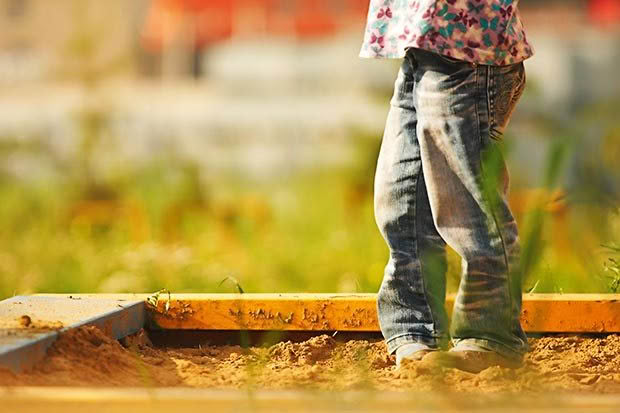How to build a sandpit

There are regular sandpits, and then there are the best kind: epic.
Words: Nadene Hall
My family has a long history of great sandpits. The first was at the bottom of a tiered garden. In the garden above was a swingset, and then a slide came down the bank, finishing in the sandpit.
Our parents gave up trying to contain it. Every couple of years, a trailerload of sand would be dumped in the middle. I suspect that even 30-mumble years later, if you started digging downhill from that site, you’d find half a quarry of sand.
My brother learned from our childhood experiences and created a beautiful macrocarpa-lined sandpit for his sons.
It lasted about a year. The Mark 2 version is almost triple the size, has a roof that doubles as a deck and looks like the prow of a pirate ship (complete with ship’s wheel, hand-made by our Dad), and of course there’s a slide, but not just any slide – a 4m-long slide because Aunty Nadene (and Nana and Poppa) wanted our boys to have a slide as good as the one she enjoyed.
SIZE: the bigger the better. Double your first estimate, but it’s probably better to triple it. If you measure the space two children take up, then add a few trucks, a digger, buckets etc, then add a friend each… go big.
LINING: you can put weedmat down but it can get blocked by fine bits of sand and over time you end up with a swimming pool when it rains. My brother’s… I mean, my nephews’ sandpit is lined with black builder’s plastic but it does have a roof.
DRAINAGE: If you have good draining soil, you could put down a layer of drainage metal (25mm washed stone) and then put the sand over the top. If it’s clay, and/or near a slope, make sure the base has a slight angle to it. I’d also recommend a trench outside the sandpit on its lowest side to help drain water away: put plastic drain coil in the bottom, cover with drainage metal, then a layer of weedmat (to stop dirt and weeds clogging the drain coil), cover with dirt and level, then add lawn seed.
PIT DEPTH: A good depth is 300mm deep – my nephews’ sandpit has 450mm high sides (the timber is 150mm widths), topped with wide planks to form a seat
for adults.
SIDES: my brother chose treated, dressed 150x50mm lengths of wood because once a sandpit gets this big, you need a lot of macrocarpa which is expensive, and one sleeper isn’t high enough to hold a good amount of sand. However, you could use sleepers if you prefer the aesthetic.
SAND: go for builder’s sand which is the most expensive but you get a clean product of a consistent size so it holds together better if you’re making sandcastles etc. You could also go for fine pumice sand as a cheaper option.
5 EXTRA TIPS
Borrow a good-sized trailer or someone’s truck and only buy sand by the cubic metre and and you will save a lot of money. But sand is very heavy so you will need a vehicle that is big enough (and most importantly, has brakes big enough) to haul it home.
SHOP around and always buy sand and wood supplies in bulk.
BUY wood in lengths of 1.8m or 3.6m – try large hardware stores but also rural supply stores which often have great deals on timber, or your local sawmill if you’re near to one.
IF YOU use a sawmill, make sure they quote you with GST added on as they typically deal only with tradies and can forget to include it until it’s time to pay.
FOR A big sandpit, it pays to have posts in each corner. Use ready mix cement in holes 300mm deep and about 5cm wider than the post all the way round. If your sandpit is going to sit 500mm above ground, the corner posts will need to be at least 800mm long so you could take a standard 1.8m fence post and cut it in half.
Love this story? Subscribe now!
 This article first appeared in NZ Lifestyle Block Magazine.
This article first appeared in NZ Lifestyle Block Magazine.
